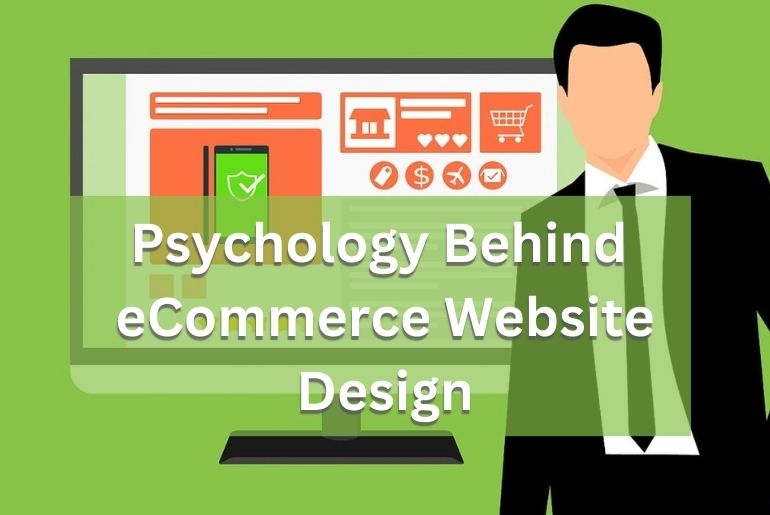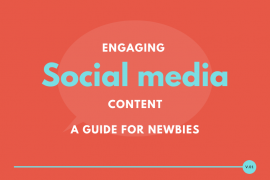Updated March 15th, 2023
Table of Contents
Explaining The Psychology Behind E-Commerce Website Design
There are several considerations that need to be made when addressing a business’s website design. Why do some sites perform better than their competitors, while others fail to gain momentum? Is it a matter of design, the language they use, or the images they include? The skillful execution of all of these elements is vital to success, but so is understanding the psychology behind them.
Consumer decisions surrounding purchasing and other types of conversions are deeply rooted in subconscious urges and the emotions elicited by clicking. When an e-commerce website takes these psychologically driven actions into consideration, it can potentially lead to higher click-through and conversion rates.
Here is a brief look into how businesses can boost conversions through specific website features designed to appeal to the subconscious mind.

The Influence of Colors and Visuals
High-quality, relevant images play a critical role in appeal — not only to grab attention and engage through the art of storytelling but also to quickly relay information. Generally, an image, infographic, or video is the first thing noticed when someone opens the page. These mediums can tell consumers exactly what they want to know with little thought or effort involved.
Featuring brand-related imagery and impactful pictures of top products on the home page while also leaving white space is advised. Giving the eyes a break and having a natural visual flow like this directs buyers where to look. When they know where to look when searching, finding and buying products becomes easier. Remember, less is often more when attracting the eyes and gaining attention.
Be sure to keep the psychology of colors in mind as well. Designing a site’s color scheme or company branding requires careful consideration as colors elicit emotion, affect behavior, and can have certain negative connotations. For instance, yellow can radiate joy, positivity, and happiness, while red might be associated with passion, heat, or anger. Researching the power of color on the human psyche is recommended when attempting to reach a target audience more effectively. This is how customers will recognize your brand at a first glance, so carefully considering a company’s color scheme is essential for businesses.
The Comfort of Structure and Organization
Overwhelming visitors with visuals and information can drive them away long before a purchase. Structuring material into small, digestible bits of information is what helps them absorb it and thus, act on it. It also helps maintain a customer’s focus, which can prove difficult when delivering large amounts of information.
To accomplish this, an important initial step is designing the page with a simple navigation bar, clear categories, and an easy-to-operate layout. Including keyword-optimized vocabulary throughout makes the site easier to understand and navigate while simultaneously driving SEO purposes. It also appeals to our brains’ natural propensity towards organization.
Additional organizational elements that shouldn’t be forgotten are a search bar and filtering options. Consumers want to find what they’re after quickly. Having these two important features is necessary for appealing to our desire to save time and categorize content. Plus, they are very beneficial to an overall positive user experience. Customers do not want to waste minutes searching through an unorganized website, meaning that these features will respect customers’ time while speeding up the conversion process.
If your business involves customers making multiple purchases over a period of time, an account management page is an excellent way of keeping important information all in one place. Not only can customers customize their profiles to better match their needs and identity, but providing personal accounts to your audience can grant them a sense of security and ownership. The knowledge that an account can be accessed from any place or device provides flexibility to consumers while encouraging them to make repeat purchases from the same business.
The Accessibility of Information
While some customers might not think too hard about their buying decisions, it is normal for customers to research a product before spending their money, especially when it comes to expensive purchases. Providing customers with as much information about a product or service as possible can aid consumers interested in making a purchase.
It is important for businesses to consider what customers are searching for so that they can tailor their product information to solve common questions. This information can vary between businesses and audiences. Tech products often benefit from detailed descriptions including hardware specifications and compatibility with other products, while medical products prioritize elements such as ingredients or side effects.
Consumers are bound to eventually run into questions or issues while using a product. A company that lacks information about their product of services will likely draw skepticism from potential buyers. By keeping ample information readily available to customers, businesses are able to establish an honest relationship with their audience while demonstrating a deep understanding of what they are providing to their supporters.
The Value of Trust and Social Proof
Humans may seem nomadic at times, but we habitually follow the crowd. Because of this mentality, consumers tend to be heavily influenced by testimonials, ratings, and further demonstrations of social proof. Including space for these persuasive features is key to gaining trust. Without conveying sufficient trustworthiness to consumers, they will move on.
Ways to improve credibility include increasing positive reviews through on-time deliveries, exceptional customer service, and meeting product expectations. Proving that previous consumers have purchased and enjoyed their experiences makes others want to benefit as well.
A survey from Nielsen Global Trust found 70% of people will trust a recommendation from a stranger. Sites can capitalize on this well-known psychological characteristic by incorporating links to social sites and off-site reviews.
Including positive reviewers from prominent online reviewers is another way companies can boost sales. While the perspective of strangers is important to consider, online reviewers are often exposed to more products, which lends more credibility to their review.
There are a variety of ways in which a company’s audience can provide promotions, including:
- Social shares
- Customer photos
- Endorsements
- Recommendations
Treading Carefully
Psychology is powerful and has the potential to increase conversions when implemented sensibly. However, just like any other marketing tactic, it is possible for problems to arise from misuse. At times, poor attempts to speak to an audience’s emotions can lead them to feel buyer’s remorse, manipulated, or disgruntled. A customer’s trust is difficult to regain once it is lost, which is why it is important to demonstrate restraint while promoting a business. Avoid damaging relationships with your target audience by speaking to the subconscious mind honestly and in moderation.












